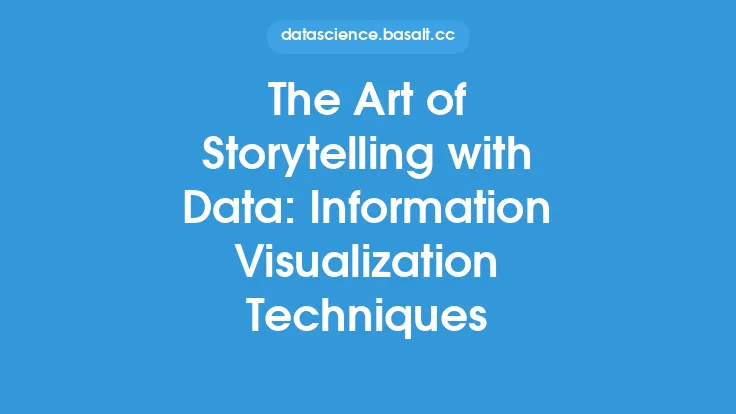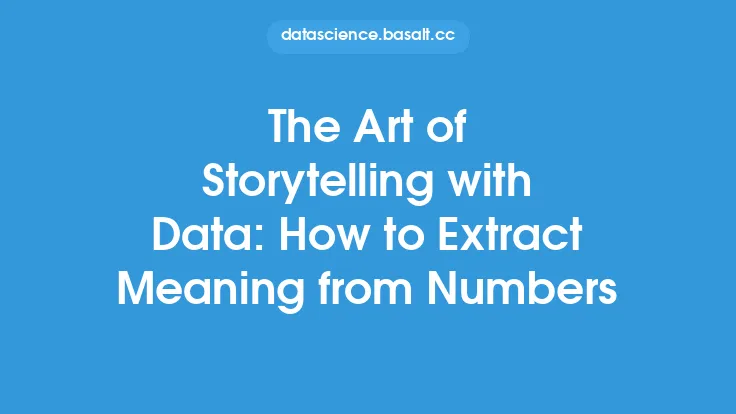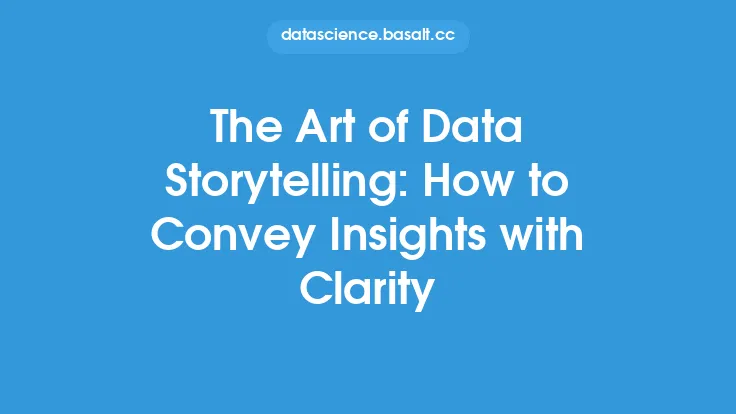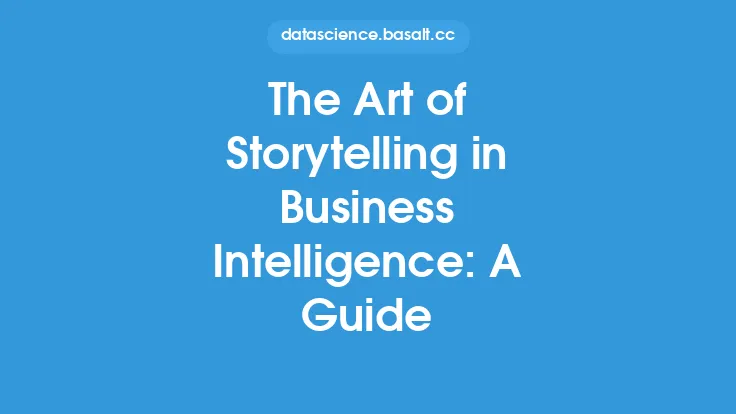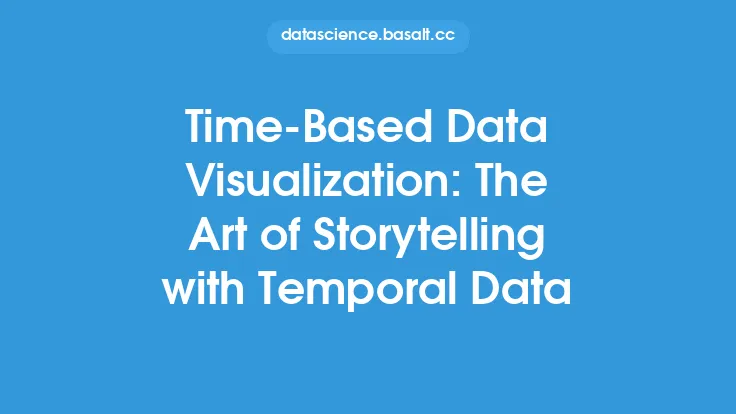In today's data-driven business landscape, the ability to effectively communicate insights and trends is crucial for informing strategic decisions, driving action, and ultimately, achieving success. One of the most powerful tools in a business's arsenal is the art of storytelling with data. This involves using data visualization, narrative techniques, and statistical analysis to convey complex information in a clear, concise, and compelling manner. By leveraging data storytelling, businesses can unlock new insights, identify opportunities, and drive growth.
Introduction to Data Storytelling
Data storytelling is a discipline that combines data analysis, visualization, and narrative techniques to communicate insights and trends to both technical and non-technical audiences. It involves using data to tell a story that is engaging, informative, and relevant to the business. Effective data storytelling requires a deep understanding of the data, as well as the ability to identify key trends, patterns, and insights. It also requires strong communication and presentation skills, as well as the ability to tailor the story to the audience and purpose.
The Benefits of Data Storytelling in Business
The benefits of data storytelling in business are numerous. By using data to tell a story, businesses can create a narrative that is both informative and engaging, making it easier to communicate complex information to stakeholders. Data storytelling can also help to identify trends and patterns that may not be immediately apparent, providing valuable insights that can inform strategic decisions. Additionally, data storytelling can help to drive action, by presenting data in a way that is clear, concise, and compelling. This can be particularly useful in situations where data is being used to support a business case or proposal.
Key Elements of Effective Data Storytelling
There are several key elements that are essential for effective data storytelling. These include:
- A clear and concise narrative: The story should be easy to follow and understand, with a clear beginning, middle, and end.
- Relevant and accurate data: The data should be relevant to the story and accurate, with any limitations or biases clearly acknowledged.
- Effective data visualization: The data should be presented in a way that is visually appealing and easy to understand, using a range of visualization tools and techniques.
- Strong communication and presentation skills: The story should be presented in a way that is engaging and persuasive, with a clear and confident tone.
- A clear call to action: The story should include a clear call to action, outlining what the audience should do next.
Data Visualization Techniques
Data visualization is a critical component of data storytelling, providing a powerful way to communicate complex information in a clear and concise manner. There are many different data visualization techniques that can be used, including:
- Bar charts and histograms: These are useful for comparing categorical data and showing distributions.
- Line charts and trend lines: These are useful for showing trends and patterns over time.
- Scatter plots and bubble charts: These are useful for showing relationships between variables and identifying outliers.
- Heat maps and tree maps: These are useful for showing complex data in a visually appealing way.
- Interactive visualizations: These are useful for allowing the audience to explore the data in more detail.
Statistical Analysis and Modeling
Statistical analysis and modeling are also essential components of data storytelling, providing a way to extract insights and trends from the data. There are many different statistical techniques that can be used, including:
- Regression analysis: This is useful for modeling the relationship between variables and identifying key drivers.
- Time series analysis: This is useful for analyzing data over time and identifying trends and patterns.
- Cluster analysis: This is useful for identifying groups and segments in the data.
- Decision trees and random forests: These are useful for modeling complex relationships and identifying key predictors.
Best Practices for Data Storytelling
There are several best practices that can help to ensure effective data storytelling. These include:
- Keep it simple: Avoid using complex language or technical jargon that may be difficult for the audience to understand.
- Focus on the insights: Rather than presenting a large amount of data, focus on the key insights and trends that are relevant to the business.
- Use visualization: Data visualization is a powerful way to communicate complex information in a clear and concise manner.
- Tell a story: Use narrative techniques to create a story that is engaging and informative.
- Practice, practice, practice: Effective data storytelling requires practice and rehearsal, so be sure to practice your presentation before delivering it to the audience.
Common Challenges and Pitfalls
There are several common challenges and pitfalls that can arise when using data storytelling in business. These include:
- Data quality issues: Poor data quality can make it difficult to extract insights and trends, and can undermine the credibility of the story.
- Lack of context: Without sufficient context, the data may be difficult to understand and interpret.
- Information overload: Too much data can be overwhelming, making it difficult for the audience to focus on the key insights and trends.
- Lack of engagement: If the story is not engaging and persuasive, the audience may not be motivated to take action.
- Technical issues: Technical issues, such as poor visualization or inadequate statistical analysis, can undermine the credibility of the story and make it difficult to communicate the insights and trends.
Conclusion
In conclusion, the art of storytelling with data is a powerful tool that can help businesses to unlock new insights, identify opportunities, and drive growth. By leveraging data visualization, narrative techniques, and statistical analysis, businesses can create a narrative that is both informative and engaging, making it easier to communicate complex information to stakeholders. By following best practices and avoiding common challenges and pitfalls, businesses can ensure effective data storytelling and achieve their goals. Whether you are a business leader, analyst, or communicator, the art of storytelling with data is an essential skill that can help you to succeed in today's data-driven business landscape.
